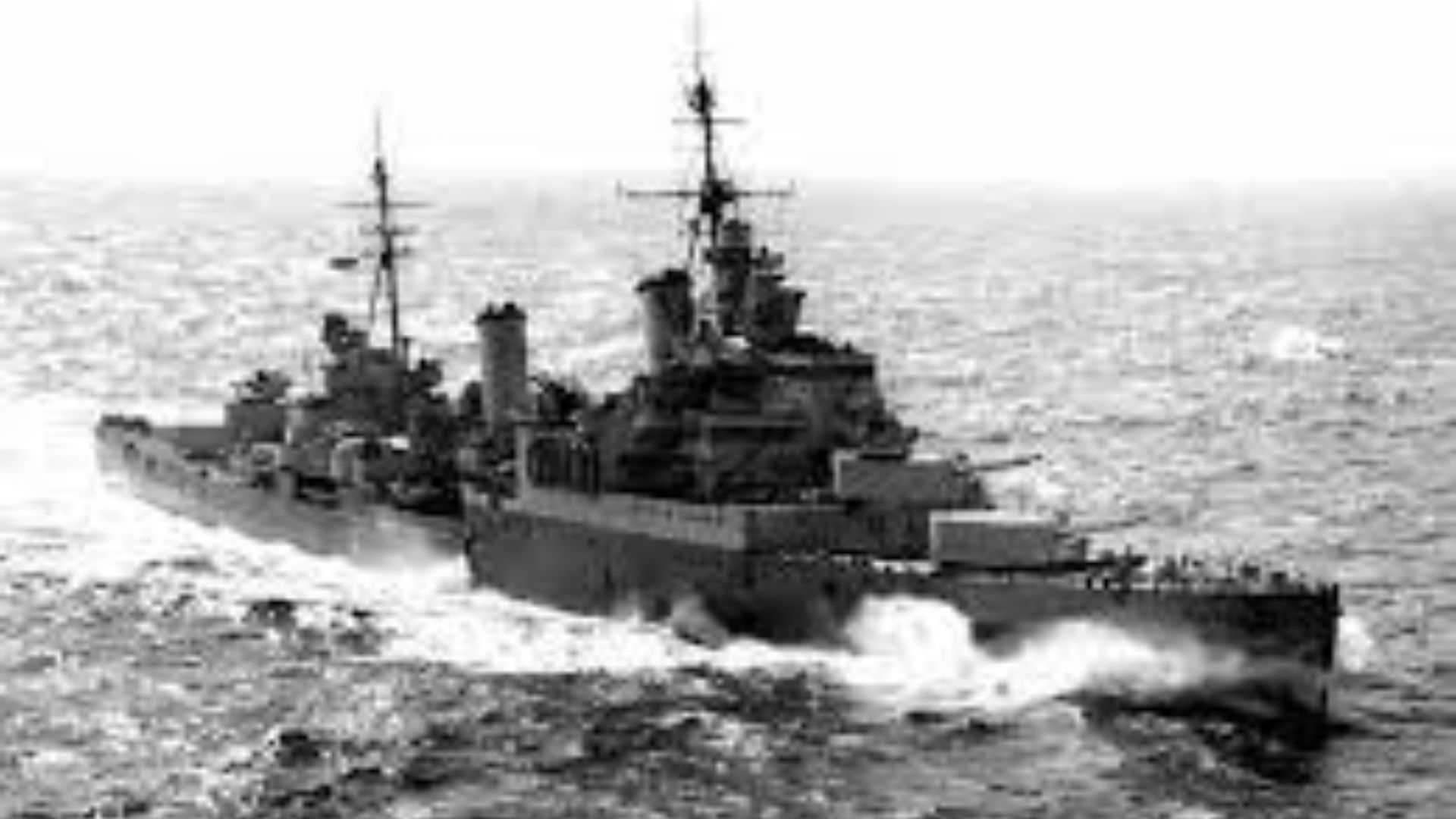
The HMS Sheffield(pennant number c24) was a town-class light cruiser, Southampton kind, the Royal Navy. She was set by Vickers Armstrong on January 31, 1935, launched on July 23, 1936, and entered service on August 25 of the following year. She participated in various actions against central surface units of the Kriegsmarine.
Hms Sheffield
Unlike the majority of the vessels of the British period, its finishes were stainless steel in contrast to the more traditional brass, thinking thus to limit the amount of time required for cleaning by the crew. His nickname, “Shiny Sheff,” was born from this peculiarity.
At the outbreak of World War II, Sheffield was assigned to the 18th Cruiser Squadron of the Home Fleet, on patrol in the Denmark Strait, and in the spring of the following year, took part in the Norwegian campaign. After a brief period during which he had anti-invasion duties in the English Channel in August, he was transferred to Force H, based in Gibraltar. From there, he worked in the Mediterranean until the end of the year.
On 9 February 1941, she participated in the bombardment of Genoa along with HMS Malaya and HMS Renown. Later, he worked against the convoys of the Navy of Vichy France and escorted aircraft carriers in the launch of direct flights to Malta. In May, she participated in the hunt for the Bismarck, following the German battleship with its radar Type 79Y, luckily managing to escape a Fairey Swordfish torpedo attack launched from Ark Royal, who exchanged for a German ship.
Eleven torpedoes were launched against Sheffield despite the pilots being warned of his presence, and due to faulty magnetic detonators and evasive maneuvers of the ship, they were able to avoid the worst. In the report of the attack, Admiral John Tovey, Commander of the Home Fleet, was told only that Bismarck was not affected. The reaction of the crew of the ship was not recorded in official accounts.
On June 12, after the Sheffield spotted a tanker designated to supply the Bismarck, the Friederich Breme, which was scuttled by the crew. After the destruction of another German support ship, the Kota Penang, which took place in a joint action with Kenya, the ship returned home.
It was later used with the task of escorting convoys directly Arctic in the Soviet Union until March 3, 1942, when it did not hit a mine off of Iceland. After repairs, which lasted until the following July, Arctic convoys escorted again, then leaned against the Allied landing in North Africa in November, called Operation Torch.
The following month, together, all incrociatore Jamaica formed the Force “R,” under the command of Rear-Admiral Robert L. Burnett, at the edge of Sheffield, who had the task of escorting the convoy JW51B. On the way, the convoy was attacked by German surface forces, but in the battle that ensued, known as the Battle of the Barents Sea, the Germans withdrew and sank the destroyer Sheffield Friedrich Ekholdt.
In February 1943, she worked in the Bay of Biscay and, in July and August, took part in the landings at Salerno, called Operation Avalanche. Back again in the Arctic, took part in the sinking of the battle Scharnhorst in the Battle of North Cape on 26 December.
In the period between April and August 1944, the aircraft carrier was used in a series of air strikes against the German battleship Tirpitz. Given the limited effectiveness of these operations, the task of immobilizing the enemy battleship was transferred to the Royal Air Force.
As a result of a long period of refit carried out both in Boston and Portsmouth, during which the turret was also removed for X to strengthen anti-aircraft armament, Sheffield was far from the theater of operations until the end of the conflict.
The Post-War Years
The refit was completed in May 1946. Later, Sheffield was assigned alternately to the West Indies, where in 1954, he served as the flagship of the Eighth Cruiser Squadron in the Mediterranean and the service in British waters. She underwent further work between 1949 and 1950 and a final round in 1954.
This year, she participated in the shooting of the film The Battle of the River Plate, which was part of the HMS Ajax. It was moved to the reserve in January 1959 and became flagship of the Home Fleet until September 1964, when it was slated to be sold.
The equipment was removed at Rosyth in 1967, and the ship was scrapped at Faslane in the same year. The ship’s bell, which is also made of stainless steel, was preserved and is still visible in the Cathedral of Sheffield, together with the battle flag.